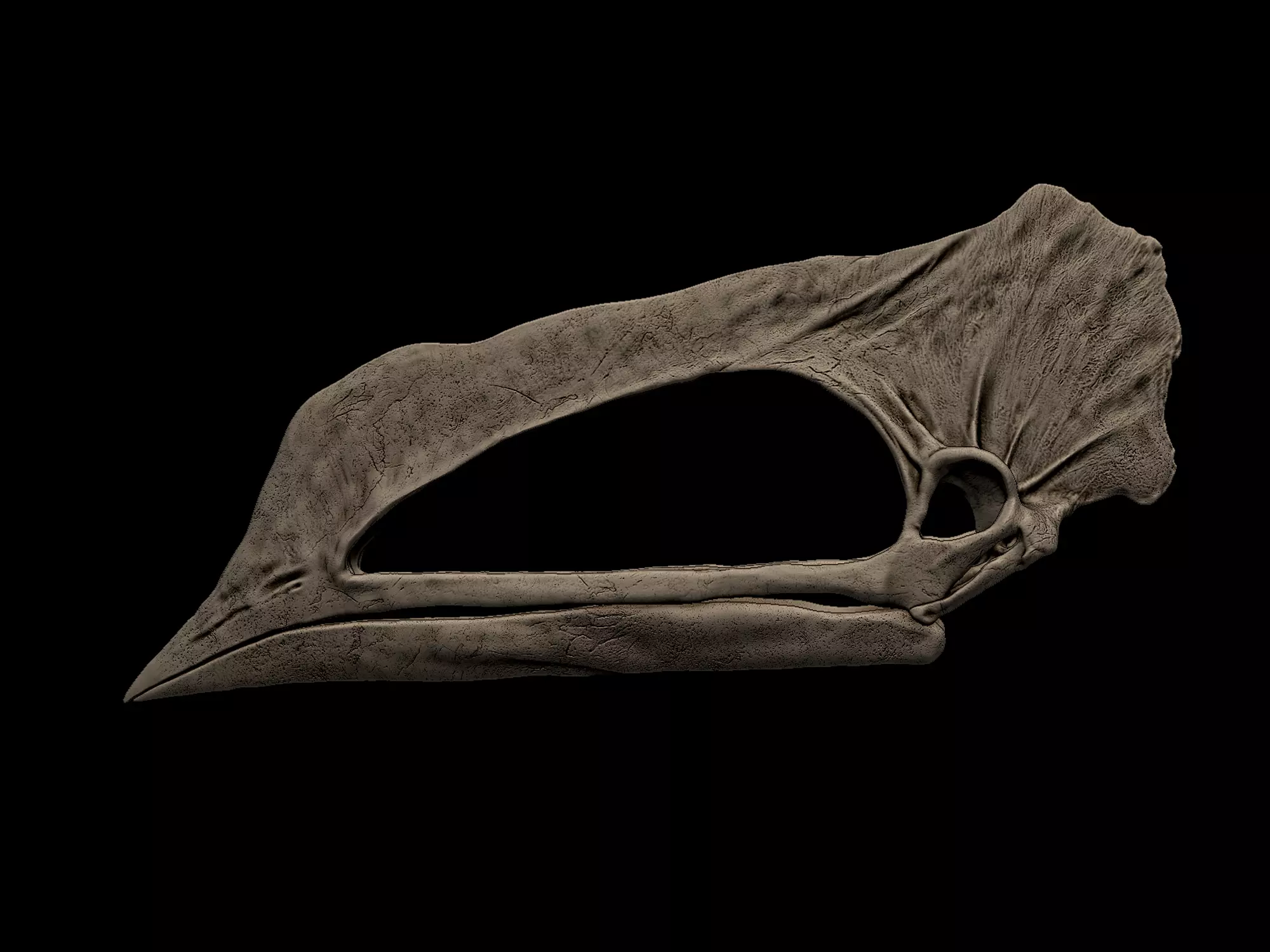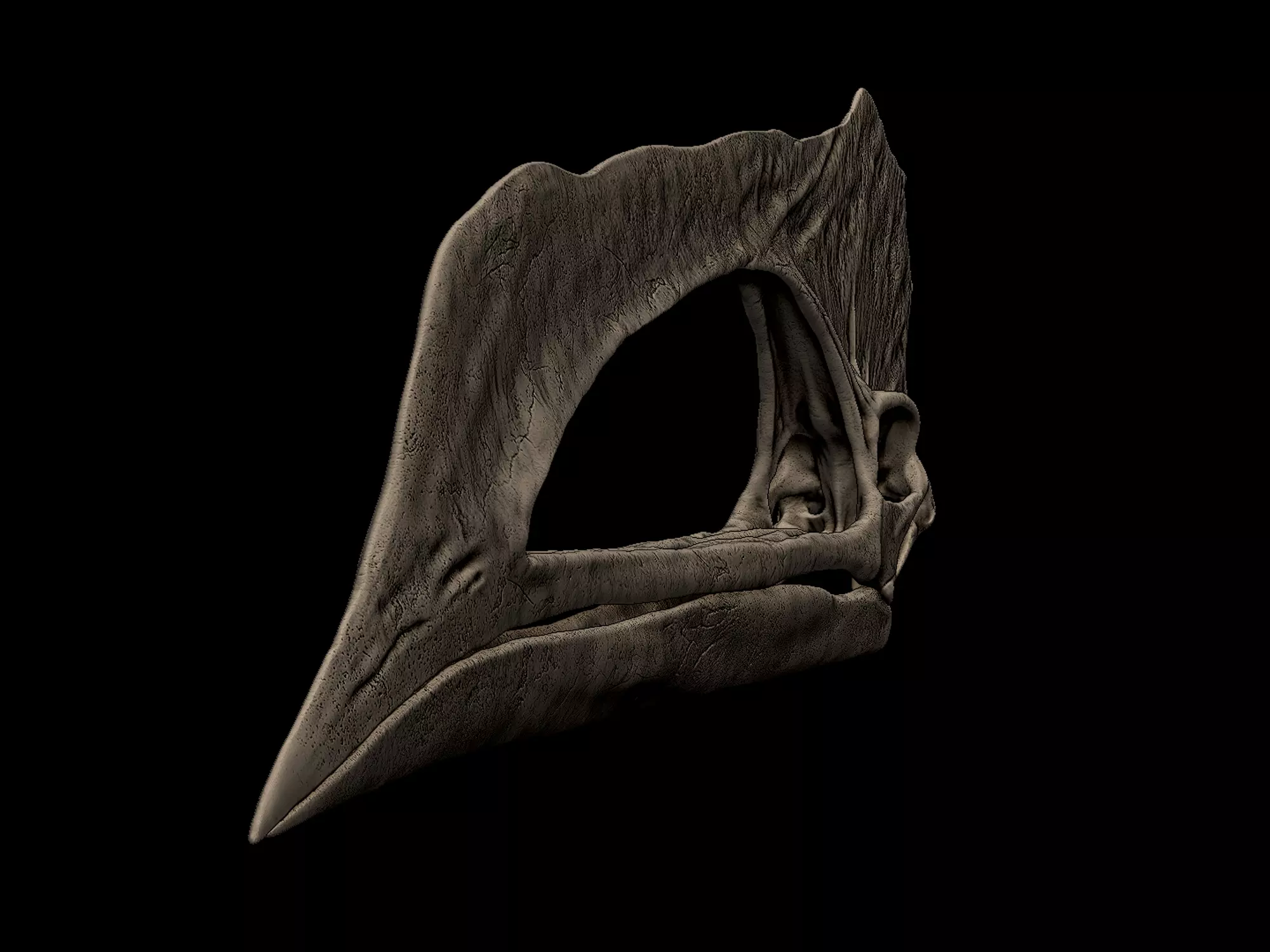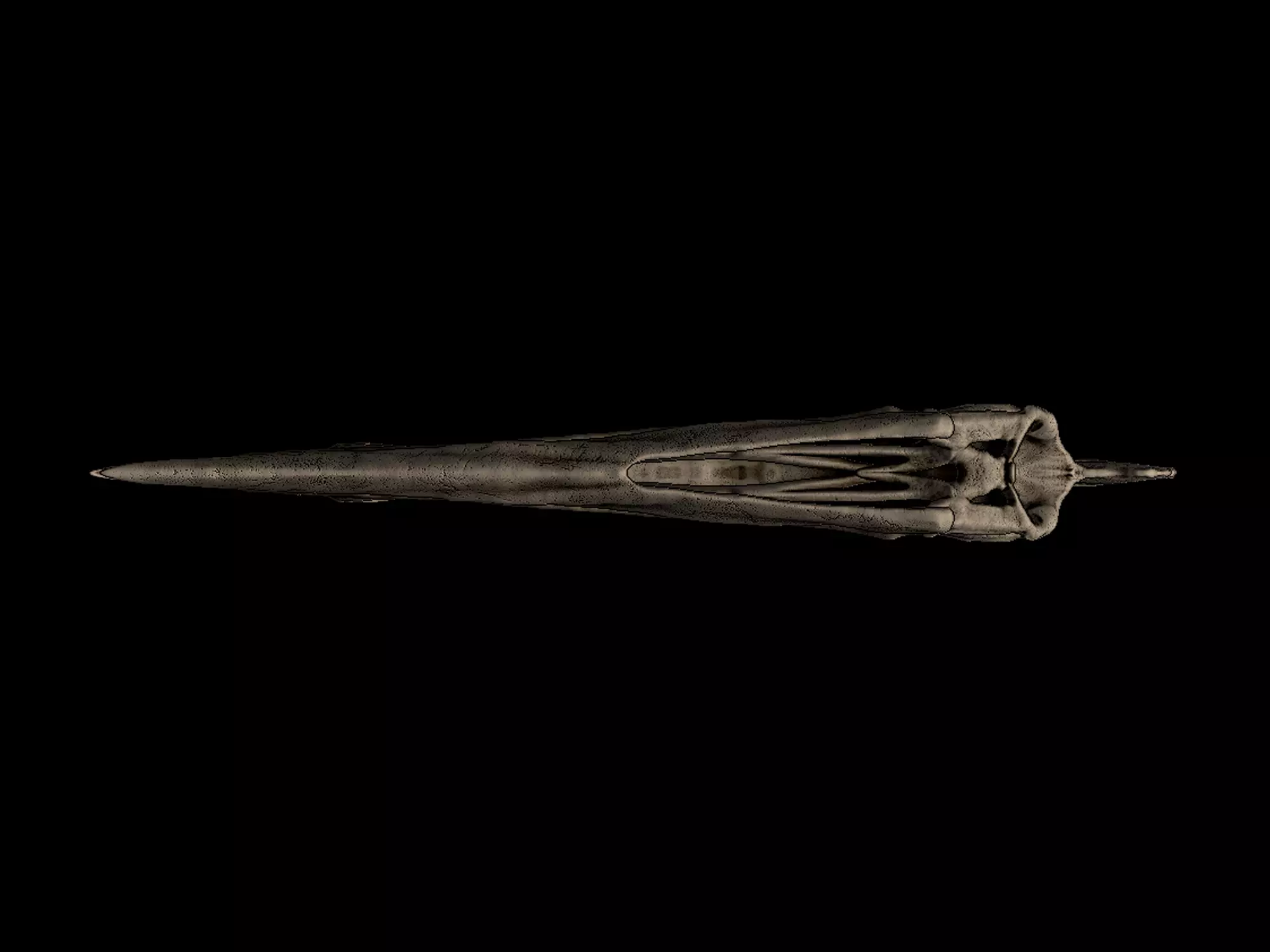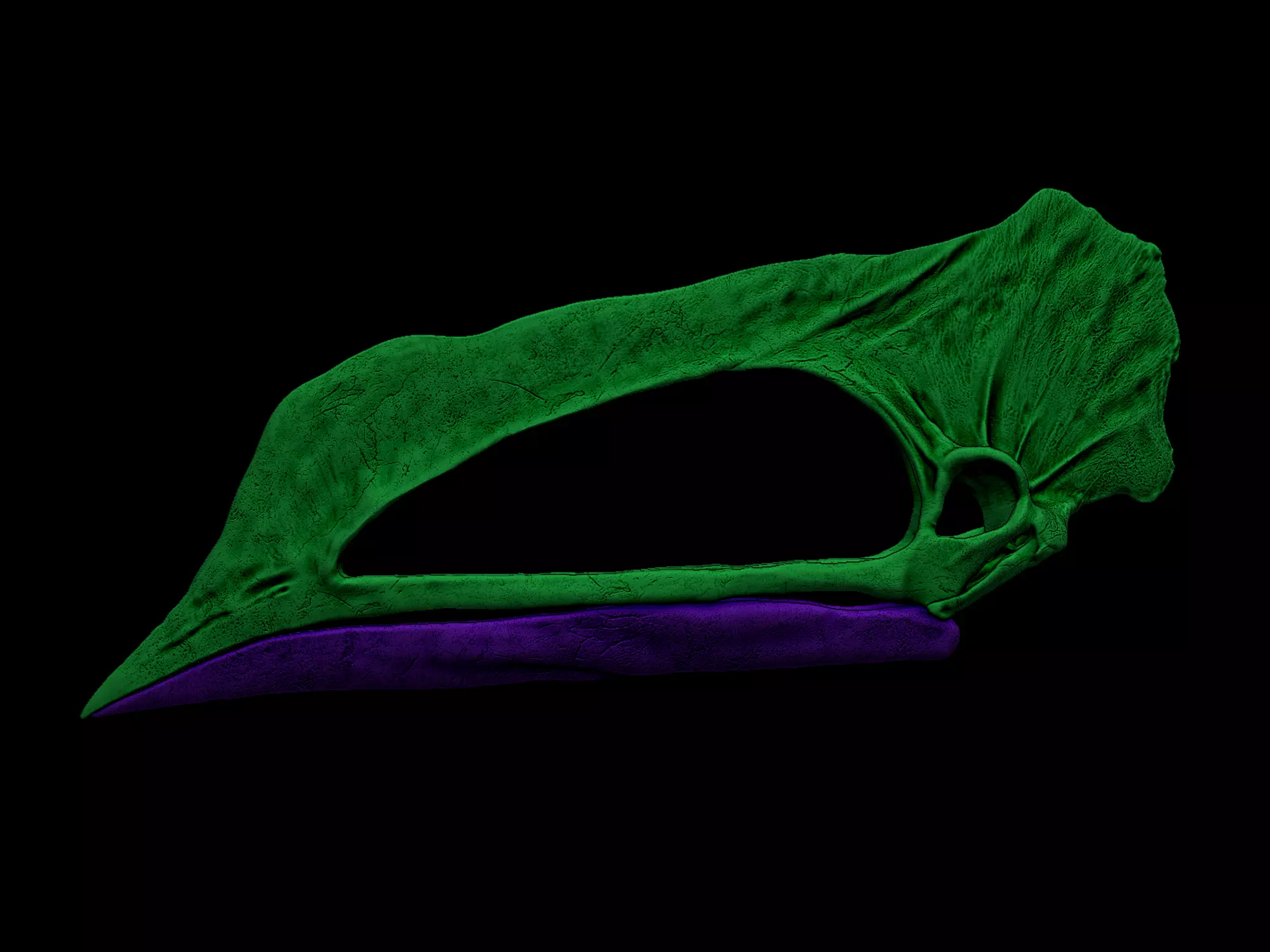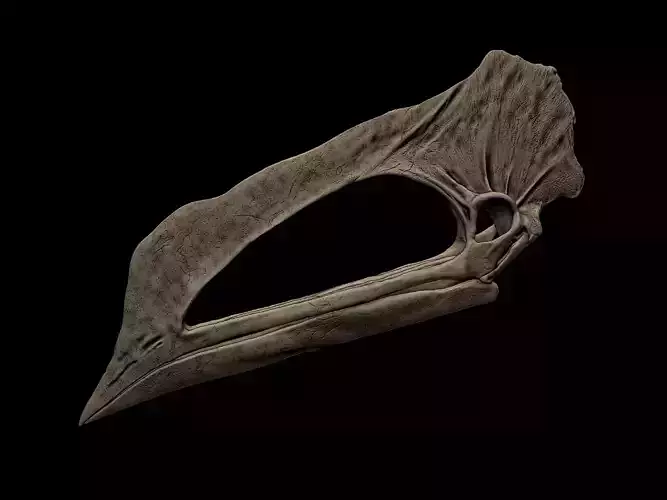
Caupedactylus Skull 3D print model
This is a life size 3d digital model skull of a Caupedactylus. OBJ, ZTL, PLY, FBX and STL files. jaw is seperated.
The genus was first named and described by Alexander Wilhelm Armin Kellner in 2013. The type species is Caupedactylus ybaka. The generic name combines the goddess of beauty of the Tupi, Caupe, with a Greek δάκτυλος, daktylos, finger, a usual suffix in the names of pterosaurs. The specific name ybaka means dwelling in the sky in the local Tupinambá.
Caupedactylus is known from the holotype specimen MN 4726-V, probably found in the Araripe basin in a layer of the Romualdo Formation dating from the Albian, about 110 million years old. It consists of a partial skeleton with an almost complete skull, lower jaws and a partial postcranial skeleton. The postcrania contain the right shoulder girdle, left coracoid, sternum, right humerus and the proximal part of the first phalanx of the wing finger. It represents and adult individual, which is exceptional for pterosaurs from this formation. The specimen was freed from the chalkstone by an acid bath.

